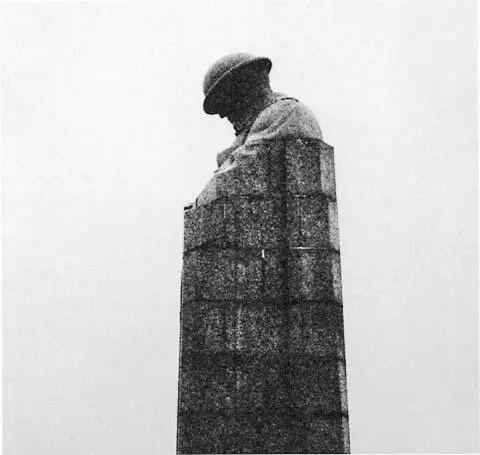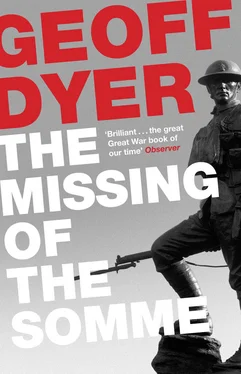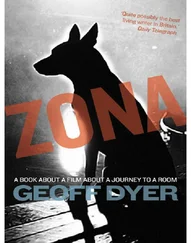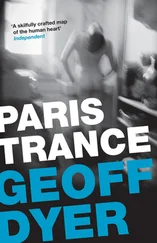Geoff Dyer - The Missing of the Somme
Здесь есть возможность читать онлайн «Geoff Dyer - The Missing of the Somme» весь текст электронной книги совершенно бесплатно (целиком полную версию без сокращений). В некоторых случаях можно слушать аудио, скачать через торрент в формате fb2 и присутствует краткое содержание. Год выпуска: 2012, Издательство: Canongate Books, Жанр: Биографии и Мемуары, Публицистика, Критика, на английском языке. Описание произведения, (предисловие) а так же отзывы посетителей доступны на портале библиотеки ЛибКат.
- Название:The Missing of the Somme
- Автор:
- Издательство:Canongate Books
- Жанр:
- Год:2012
- ISBN:нет данных
- Рейтинг книги:3 / 5. Голосов: 1
-
Избранное:Добавить в избранное
- Отзывы:
-
Ваша оценка:
- 60
- 1
- 2
- 3
- 4
- 5
The Missing of the Somme: краткое содержание, описание и аннотация
Предлагаем к чтению аннотацию, описание, краткое содержание или предисловие (зависит от того, что написал сам автор книги «The Missing of the Somme»). Если вы не нашли необходимую информацию о книге — напишите в комментариях, мы постараемся отыскать её.
The Missing of the Somme — читать онлайн бесплатно полную книгу (весь текст) целиком
Ниже представлен текст книги, разбитый по страницам. Система сохранения места последней прочитанной страницы, позволяет с удобством читать онлайн бесплатно книгу «The Missing of the Somme», без необходимости каждый раз заново искать на чём Вы остановились. Поставьте закладку, и сможете в любой момент перейти на страницу, на которой закончили чтение.
Интервал:
Закладка:
I see Ypres and the surrounding area through the words of Stephen Graham and Henry Williamson. . We arrive there in the afternoon darkness and book into an expensive cheap hotel. There are FIRE EXIT signs on every door, brown covers on the beds. Towels the size of napkins, burn marks on the dresser. Our room is the sort which demands that even nonsmokers spend the first conscious minutes of the day propped up in bed, exhaling smoke at the hangover ceiling.
In the evening we walk to the Grote Markt , the vast square in the centre of town. After Ypres was flattened during the war, many buildings — like the fourteenth-century Cloth Hall that dominates the Markt — were rebuilt just as they had been. Williamson returned here in 1927 to find Ypres unrecognizably ‘clean and new and hybrid-English’. Sixty years of ageing have given it the look of a pleasant if slightly gloomy somethingth-century town, scrupulously preserved.
After a couple of beers we make our way to the Menin Gate, the memorial to the Missing of the Ypres salient. The names of 54,896 men who died between 1914 and 15 August 1917 are carved here. Designed by Sir Reginald Blomfield, it is a version of a triumphal arch, so extended as to seem almost like a tunnel. Steps in the middle of this tunnel take us up to the outside of the memorial. From here we can see the leafy water of the canal beyond the Gate. Damp air. Stillness waiting on itself.
We walk back down inside the memorial and then beyond it, across the canal. From this distance the buildings stretching away from the Gate seem to crouch beneath it. And yet, at the same time, it belies its own scale and you wonder if it is really as big as it seems. Everything about the memorial suggests that it should work powerfully on you, but its effect is oddly self-cauterizing.
Well might the Dead who struggled in the slime
Rise and deride this sepulchre of crime.
By 1927 when Sassoon scrawled these words — metaphorically speaking — on the recently inaugurated Menin Gate, his tone of maimed derision had become a matter of reflex. If ‘this pomp’ of ‘peace-complacent stone’ is a misrepresentation and denial, then so, equally, is Sassoon’s response to it. Refusing to accommodate the possibility of atonement for ‘the unheroic Dead’ on whose behalf he is lobbying, Sassoon yet conveys — and thereby yields to — the memorial’s own version of itself when he writes of the ‘intolerably nameless names’.
In his novel Fields of Glory Jean Rouaud describes life in the kind of ‘sullen swamp’ that, for Sassoon, is the enduring truth of the Ypres battlefield:
Little by little, abandoned corpses sank into the clay, slid to the bottom of a hollow and were soon buried under a wall of earth. During an attack you stumbled over a half-exposed arm or leg. Falling face to face on a corpse, you swore between your teeth — yours or the corpse’s. Nasty the way these sly corpses would trip you up. But you took the opportunity to tear their identification tags off their necks, so as to save those anonymous lumps of flesh from a future without memory , to restore them to official existence, as though the tragedy of the unknown soldier were to have lost not so much his life as his name.
Rouaud here affirms the underlying longing that links those ‘who struggled in the slime’ and the memorial arch on which they are commemorated. Lord Plumer was not bandying empty rhetoric when, at the inauguration of the Gate, he declared on behalf of the bereaved: ‘He is not missing; he is here.’
Memorials to the Missing are not about people, they are about names: the nameless names.
It is almost eight o’clock. A few people have congregated beneath the arches. The clocks begin to chime damply. Traffic comes to a halt. Two buglers take up position beneath the Gate and play The Last Post.
The two minutes’ silence on the second anniversary of the armistice was broken by The Last Post, ‘acute, shattering, the very voice of pain itself — but pain triumphant,’ according to The Times . In Death of a Hero the burial of George Winterbourne is concluded by the same ‘soul-shattering, heart-rending. . inexorable chains of rapid sobbing notes and drawn-out piercing wails’ that are heard here at the same time every day of the year.
A boy cycles past. One of the buglers gestures quietly for him to stop. The sound of the bugles ricochets from the walls of the memorial. Echoes chase themselves between the arches. The last notes fade away, beckoning into silence. Afterwards silence lies on the dark canal, a silence in which every note is preserved intact.
Traffic resumes. We drift away, eat dinner, drink some more. It is very cold. Perhaps it is just the weather, perhaps it would be different in the summer — though one feels this is the season when the town comes into its own — but Ypres seems, in Stephen Graham’s phrase, ‘a terrible place still’. Graham was writing about the Ypres of 1920, when ‘death and the ruins completely out-weigh[ed] the living’. The ruins have been replaced by replicas of the original buildings, there is nothing wrong with the town — though it is not the kind of place you would come for a honeymoon — but you can see what Graham meant when he wrote that
it would be easy to imagine someone who had no insoluble ties killing himself here, drawn by the lodestone of death. There is a pull from the other world, a drag on the heart and spirit.
Especially in our dismal hotel room. We lie on our beds, half pissed. Mark is reading Death’s Men ; Paul, They Called It Passchendaele ; I read The Challenge of the Dead . Eventually the other two drop off to sleep. I go on reading. I ‘lie listless, sleepless, with Ypres on the heart, and then suddenly a grand tumult of explosion, a sound as of the tumbling of heavy masonry’.
Paul snoring.
We drive along the flat roads of Flanders through the dregs of autumn. Every crossroads is smeared with tractor mud. It has stopped raining and started to drizzle. ‘Intermittent’ is the nearest we get to turning off the wipers — the Ypres, as we prefer to call them. The landscape is a sponge, soaking up rain. Turnips or beets — root vegetables of some kind, in any case — are piled up at entrances to fields.
Because the car is rented, we drive at top speed through every puddle and slick of mud, rally-cross style. Soon it is plastered with muck. From now on we refer to it as the tank: ‘Let’s park the tank’, ‘The tank needs petrol. .’ Mainly, because it is so cold, we say, ‘Let’s get back in the tank.’
Near St Julien we come to Frederick Chapman Clemesha’s Canadian Memorial: the bust of a soldier mounted on and merging into a pillar of square stones. Head tipped forward, facing not towards the enemy lines of old but back towards Ypres. Rain smoking around him, dripping from the brim of his tin helmet. Thin trees in the distance. Sky grey as the rainstreaked stone of the monument.
We are in no hurry to leave. The memorial makes no appeal and no demands. It commands its solemn patch of land. Withstanding rain and time, we stand with it, this imperturbable monument.

Mourning for all mankind?
Beyond that it is difficult to say what feelings the memorial evokes. Not pity, not pride, not sadness even. Henry Williamson acknowledged this uncertainty while remaining ostensibly untroubled by it. For him it is a ‘memorial to all soldiers in the war’. Having found a way of articulating the statue’s refusal to yield to an easily identifiable response, he generalizes still further: it ‘mourns for all mankind’ — at which point the actual statue all but disappears in a fog of generalized emotion. It is a grand gesture and a self-defeatingly banal one: if all mankind is to be mourned, there would be no need to single out for special lamentation this particular
Читать дальшеИнтервал:
Закладка:
Похожие книги на «The Missing of the Somme»
Представляем Вашему вниманию похожие книги на «The Missing of the Somme» списком для выбора. Мы отобрали схожую по названию и смыслу литературу в надежде предоставить читателям больше вариантов отыскать новые, интересные, ещё непрочитанные произведения.
Обсуждение, отзывы о книге «The Missing of the Somme» и просто собственные мнения читателей. Оставьте ваши комментарии, напишите, что Вы думаете о произведении, его смысле или главных героях. Укажите что конкретно понравилось, а что нет, и почему Вы так считаете.












